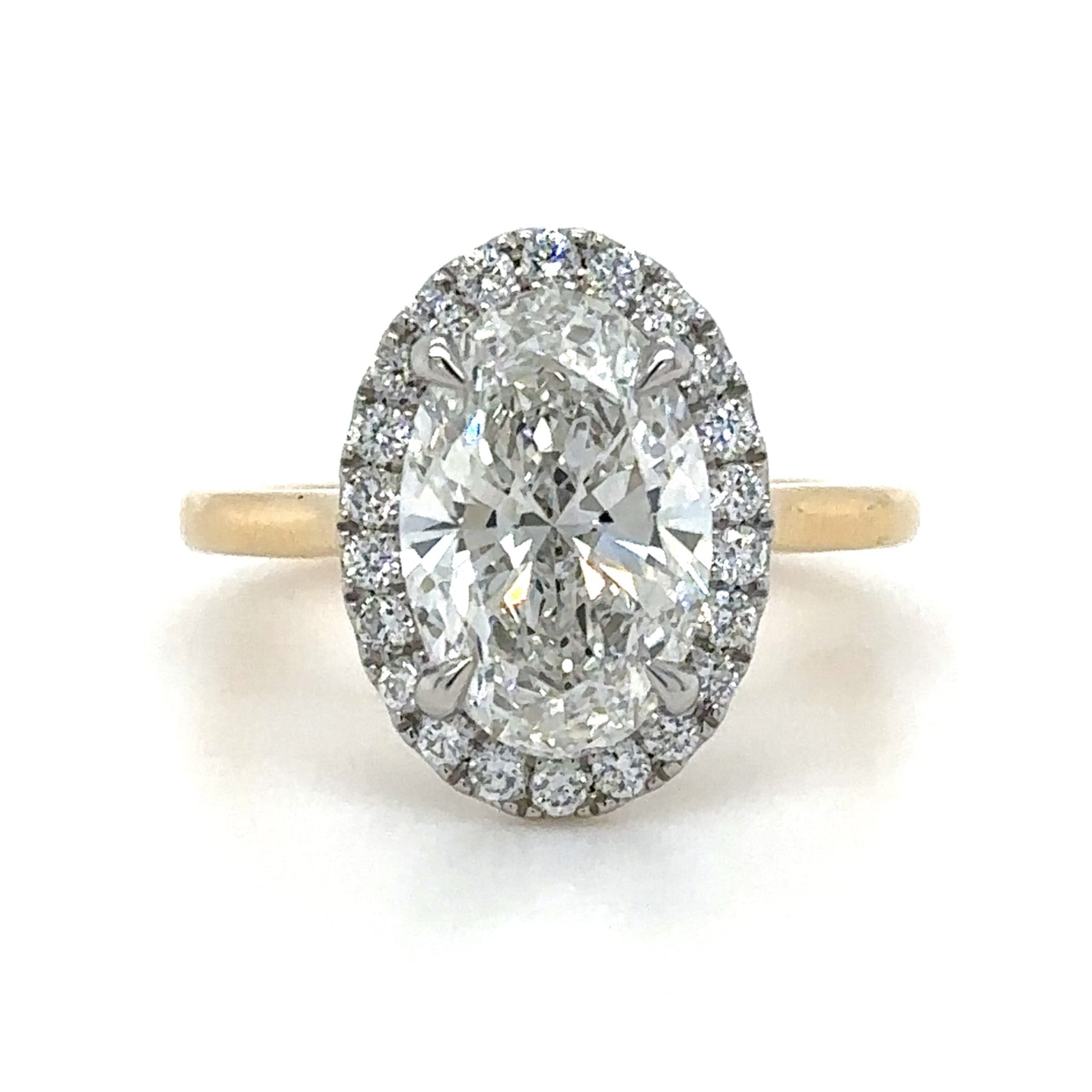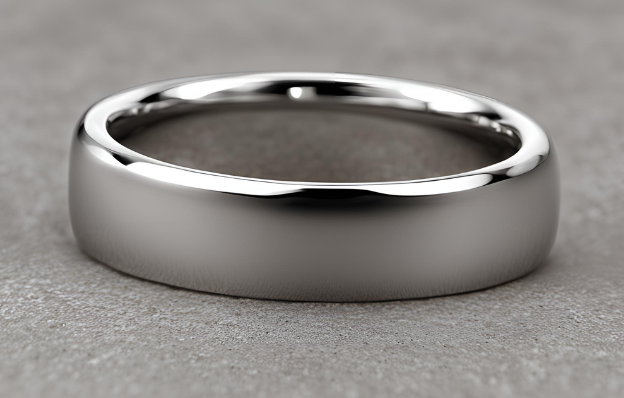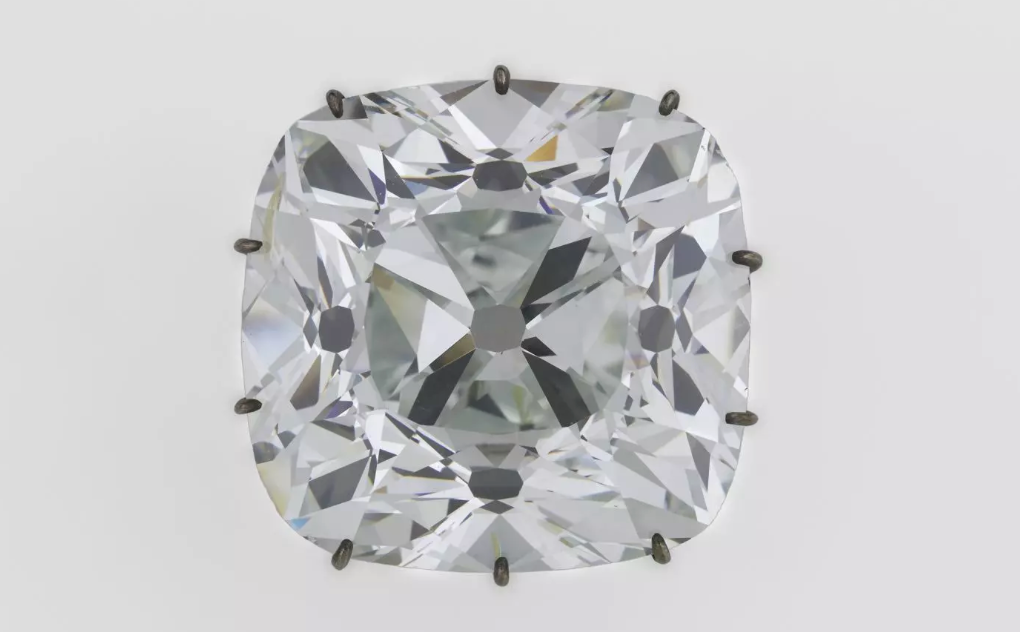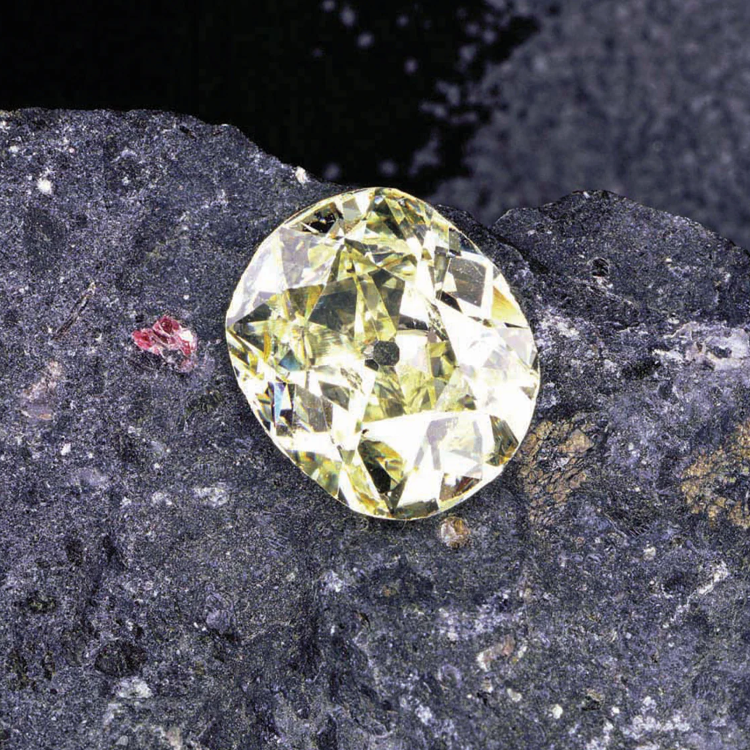
The Jacob Diamond | History of Diamonds
Discover with us the brilliant tale and journey of one of India's and indeed the Worlds Great treasures, the Jacob Diamond.
- Introduction
- Origins of the Jacob Diamond
- Alexander Malcom Jacob
- Rumour: Why was the Jacob Diamond Called Unlucky
- Where is the Jacob Diamond now
- Jacob Diamond Characteristics
- Other names and Famous appearances
Introduction
At 184 Carats the Jacob Diamond is considered the world's 5th biggest polished diamond. Being one of the most spectacular, mesmerizing, and valuable jewels of all time, it has been declared a National Treasure of India. With a cultural signficance level of that alongside the breath-taking Koh-i-noor. (Which was a diamond thought of as no possible a competitor at the time) And then with all of Earth's wonderful surprises, came the Jacob Diamond approximately 150 years later weighing 79 carats more.
Origins of the Jacob Diamond
The is not much known on the origins or indeed who first graced it from the ground. However there are two theories as to its origin. It was either found in Kimberly, South Africa or in the legendary Golconda Mines of India. It was discovered in 1884 as a 457.5 carat rough diamond, the Third largest diamond in the world at that time, Third only to the Great Mogul Diamond (787ct Rough) and the Koh-i-Noor (Weight never recorded at original Rough but estimated to be 700cts+).
At the time in 1884, the Golconda mines of India were well established and known to be producing rare diamonds alongside the Regent Diamond and Hope Diamonds from centuries before. The Diamonds at Kimberly in South Africa were just discovered on farms between 1869-1871 before even being purchased and mined individual plot holders.
From the first few years since is a mystery, however in 1991 it was found the Jacob Diamond made its was into the hands of a Jewellery Syndicate in Amsterdam.
Alexander Malcolm Jacob

(Alexander Malcolm Jacob. Photographed late 1800's)
Alexander Malcolm Jacob was born in Diyarbakir, South Eastern Turkey of Syrian Catholic descent. At the age of just 10 years old he was sold as a slave to a pasha – (a Turkish dignitary, governor or general). The pasha gave him an excellent education teaching him about languages, literature and philosophy. After the death of his pasha, he became a free man and in the 1870’s started trading jewels and gemstones and art. Such was his education, knowledge and expertise that his business was an incredible success. He lived in Simla from the 1870’s, in the Northern State of Himachal Pradesh.
Living a successful life, Alexander Malcolm Jacob procured the Jacob Diamond from a jewellery syndicate in Amsterdam in 1891 and confidently planned to make a profit with the biggest deal of his lifetime with one of the wealthiest men in the world, if not, the wealthiest man in the world. A deal which Jacob would consider his final before retirement.
Alexander Malcom Jacob offered the Jewel to Nazim Mahboob Ali Khan, the sixth Nizam of Hyderabad. The Nazim having one of the most grand collections of jewellery and gems at the time offered him 4 million rupees. At this stage he had not decided that he wanted the diamond as he had only seen a photograph of it.
Nazim Mahboob Ali Khan (1886-1967) ascended to his wealthy and powerful throne in 1869. He is described as a kind and compassionate man who used to travel in disguise through the Kingdom of Hyderabad helping people in need. He ruled Hyderabad from 1911- 1948 until India annexed it.

(Nazim Mahboob Ali Khan, 6th Nazim of Hyderabad)
Jacob, misunderstanding in his eagerness and thought the deal was done and paid the full price of the diamond to the European syndicate. He obtained a small deposit before sending it to The European Jewellery Cutters in Amsterdam. The Jewellery Cutters subsequently lost the deposit and went to court to try and get their money back. He did already know that the Nazim was not really interested.
Due to the confusion with the brokerage of the sale Jacob was charged with fraud and as a result the court awarded The Nizam the Jacob Diamond for a lower price. Reaching the ears of his prestigious clients and the public, the deal went quite the opposite how Jacob had intended. Instead of glory it bought him ignominy, instead of great wealth it brought him impoverishment.
After a long trial at The Calcutta High Court, Jacob was acquitted and found Not Guilty of any Fraud, but by then it was too late. He had lost his clientele, his reputation, and his money. He now he also had court fees to pay.
Towards the end of his life Jacob became blind but then miraculously a friend of his enabled a charity to restore his sight 14 years later. He spent his last years living in a small property overlooking the Bombay Yacht Club. The subject of hundreds of articles and 3 books, he died a reclusive pauper. His last words to a lady called Alice Draycott were “Give my love to Shimla.”
Jacob died in 1921. In his obituary of 12 January 1921, The Statesman, Calcutta wrote: “A romantic career ends in poverty.” They also wrote that “People may believe or reject the legends about Jacob as a wonder worker but of his eminence as an art dealer and jeweller there was no question.”
John Zubrzycki, the author of a book on the subject gave a talk at “The Timeless Legacy of Indian Jewels” at the Imperial Club. He said:
“In July 1881, Jacob rode in a gilded carriage down the streets of Hyderabad. He carried the world’s costliest diamond with him, wrapped in a white silk handkerchief, concealed in a secret pocket” to meet the Nizam. He had no idea of the chaos that would follow.
Despite his personal decline, Jacob has entered history by having his name on one of the most phenomenal and spectacular diamonds of all time where it has remained for over 100 years.
Rumour: Why was the Jacob Diamond called Unlucky?
Due to the fall of such a previously successful and wealthy Jacob, the false accusations some may have begun to speculate that this diamond carried with it unfortune to the owner.
Equally now the Nazim may too have thought the diamond unlucky. Never had a prince's statement been in a court. And some now the Jacob Diamond had been given the name ‘Mahoos’ meaning sinister or unlucky by the Nazim's close friends. Legend says then one of the world’s most spectacular diamonds was wrapped in a cloth and stored in a slipper because it was thought to be unlucky. It was secretly and deliberately wrapped in a cloth and hid it inside a shoe inside Chowmahalla Palace.
Years later his son and successor, The Seventh Nizam of Hyderabad, Nizam Mir Osman Ali Khan found the diamond in the shoe and used it as a paperweight to hold down documents and letters.
Where is the Jacob Diamond Now?

At the end of the 20 century the Indian Government decreed their policy that national treasures should not be sold abroad, and that included The Jacob Diamond. However, the owners wanted it to be sold. In the end the Indian Government bought the Jacob Diamond for $13 Million.
In 2001 The Jewels of the Nizam of Hyderabad were put on display at the National Museum in New Delhi, and in 2007 The Jacob was displayed in a major exhibition at the Salar Jung Museum in Hyderabad.
The Jacob Diamond is now currently in Mumbai in the Reserve Bank of India. It was valued in 2008 at £100 Million.
In 2019 The National Museum of Delhi exhibited it which attracted hundreds of thousands of visitors from all over the world, one of the first times in decades that this diamond was brought out to public eyes.
Jacob Diamond Characteristics
Cut: Antique Cushion (58 Facets)
Colour: Colourless
Clarity: Eye Clean
Faceted Carat: 184.75ct (36.9g)
Rough Carat 457.5ct (80g)
Measurements: 39.5mm x 29.25m x 22.5mm
Other names and Famous Appearances

The Jacob Diamond has also been known as The Victoria and The Imperial, after Britain’s reigning monarch. Also due to its size it has also been known as the Great White Diamond and Mahoos (Unlucky)
In 1947 Nizam Osman Ali Khan, Asaf Jah VII the Nazim of Hyderabad, the last ruler of Hyderabad, gifted a tiara and necklace to Queen Elizabeth in 1947 as a wedding gift from the jewellers called Cartier. It is known as the Nazim of Hyderabad necklace and there was a picture of this necklace on the Bahamian dollar bill.
He was considered one of the world's wealthiest men, with over £400 millions of jewels from the Golconda Mines, the only supplier of diamonds at that time. He had been given the title of “Faithful Ally of the British Crown” because of his huge financial contributions.
The necklace was made by Cartier in 1935. It is described by Hugh Roberts (in The Queens Diamonds pp 282-285) as a “pave-set centre with detachable double-drop pendant incorporating 13 emerald cut diamonds and a pear-shaped drop; the chain of 38 brilliant – cut open back collets with an elongated oval brilliant set snap.”
Photographs by Yousef Karsh taken in 1951 with Queen Elizabeth II wearing the necklace are in The National Portrait Gallery.
In February 2014, The Princess of Wales, Kate Middleton wore the Nazim of Hyderabad Necklace to a gala at the Portrait Gallery.)
In conclusion, the Jacob Diamond was one of the most spectacular diamonds discovered in the late 1800's. Its remarkable size and quality are still just as extremely impressive today. Whether the mystery's of the past of this beautiful gem may be divulged or remain a secret to history we know that the Jacob Diamonds history has only just begun.
Contact us at Cairn Diamonds or visit our website at cairndiamonds.com to discover your own Jacob Diamond and begin your tale of magnificent diamond history today.
Further reading
The Mysterious Mr Jacob: Diamond Merchant, Magician and Spy by John Zubrzycki
'Kim' by Rudyard Kipling. (Some say he was the character of Lurgan Sahib of the British Secret Service, in Rudyard Kipling's book called Kim.)
“Shimla, the summer capital of British India” by Raja Bhasin.







